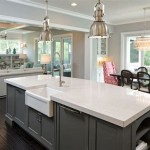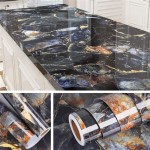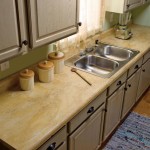Plumbed In Water and Ice Dispenser Countertop: A Comprehensive Guide
The integration of a plumbed-in water and ice dispenser directly onto the countertop represents a significant upgrade to modern kitchens and break rooms. These units offer a continuous and convenient supply of purified water and ice, eliminating the need for manual refilling and reducing the reliance on bottled water. This article provides a comprehensive overview of plumbed-in water and ice dispenser countertops, covering their benefits, installation considerations, available features, maintenance requirements, and factors to consider when selecting a model.
Advantages of Plumbed-In Systems
Plumbed-in water and ice dispensers offer several distinct advantages over their non-plumbed counterparts. The most prominent benefit is the elimination of manual refilling. With a direct connection to the building's water supply, these systems provide a continuous source of filtered water and ice, ensuring that users always have access to refreshments. This is particularly beneficial in high-traffic areas such as offices, gyms, and large households where demand for water and ice is consistently high.
Furthermore, plumbed-in systems often incorporate advanced filtration technologies, delivering water that is significantly cleaner and purer than tap water. These filters remove impurities, sediments, chlorine, and other contaminants, resulting in improved taste and odor. The consistent use of filtered water can also contribute to better hydration habits and overall health. By reducing the consumption of bottled water, plumbed-in systems contribute positively to environmental sustainability by minimizing plastic waste.
Another key advantage is the increased capacity and output of plumbed-in dispensers. Because they are connected directly to the water line, they can produce larger quantities of ice and dispense water more rapidly compared to models that rely on a reservoir. This makes them suitable for busy environments or situations where a large volume of water and ice is needed quickly.
Installation Considerations
The installation of a plumbed-in water and ice dispenser countertop requires careful planning and execution. The primary requirement is access to a potable water line and a drain line. Ideally, the dispenser should be located near an existing water supply, such as under a sink, to minimize the complexity and cost of the installation. If a drain line is not readily available, one may need to be installed, which can involve additional plumbing work.
The installation process typically involves connecting the dispenser to the water supply line using a specialized fitting or connector. A shut-off valve should be installed on the water line to allow for easy maintenance and repair. A drain line is then connected to the dispenser to remove excess water from the ice-making process. The dispenser is then secured to the countertop to prevent movement and ensure stability.
It is highly recommended that a qualified plumber perform the installation to ensure that all connections are secure and compliant with local plumbing codes. Improper installation can lead to leaks, water damage, and potentially void the warranty of the dispenser. Before installation, it is crucial to verify the dimensions of the dispenser and ensure that it fits comfortably on the countertop.
Electrical requirements must also be taken into account. The dispenser will need to be plugged into a grounded electrical outlet. The outlet should be located within easy reach of the dispenser's power cord and should comply with all relevant electrical safety standards.
Features and Functionality
Plumbed-in water and ice dispenser countertops are available with a wide range of features and functionalities. These features enhance user convenience, improve performance, and cater to specific needs and preferences. One common feature is the built-in filtration system, which removes impurities from the water supply. The type and effectiveness of the filter can vary depending on the model.
Many dispensers offer multiple water temperature options, such as cold, room temperature, and hot. Hot water dispensing is particularly useful for making tea, coffee, or instant soups. Some models also include a carbonation feature, allowing users to create sparkling water on demand. Variable ice cube sizes and shapes are also common, enabling users to customize their ice supply.
To enhance user experience, many dispensers incorporate digital displays and touch controls. These interfaces provide information on water temperature, filter status, and other relevant parameters. They also allow users to easily adjust settings and select desired features. Some dispensers also feature automatic shut-off mechanisms to prevent overflows and conserve energy.
Hygiene and sanitation are important considerations for water and ice dispensers. Many models incorporate self-cleaning functions and antimicrobial surfaces to inhibit the growth of bacteria and mold. Removable drip trays are also common, making it easier to clean up spills and maintain a hygienic environment.
Maintenance and Care
Proper maintenance is essential to ensure the long-term performance and reliability of a plumbed-in water and ice dispenser countertop. Regular filter replacement is crucial to maintain water quality and prevent the buildup of contaminants. The frequency of filter replacement depends on the type of filter and the volume of water consumed. The manufacturer's instructions should be consulted for specific recommendations.
The exterior of the dispenser should be cleaned regularly with a mild detergent and a soft cloth. Avoid using abrasive cleaners or scouring pads, as these can damage the surface. The ice storage bin should be emptied and cleaned periodically to prevent the accumulation of ice fragments and debris. The drip tray should be emptied and cleaned daily to prevent the growth of bacteria and mold.
Periodically inspect the water and drain lines for leaks or damage. Any leaks should be repaired promptly to prevent water damage. The dispenser should be descaled regularly to remove mineral buildup from the internal components. Descaling can be done using a commercially available descaling solution or a mixture of vinegar and water.
If the dispenser is not going to be used for an extended period, it should be drained and disconnected from the water supply. This will prevent the buildup of stagnant water and minimize the risk of damage. The manufacturer's instructions should be consulted for specific storage recommendations.
Factors to Consider When Selecting a Model
Selecting the right plumbed-in water and ice dispenser countertop requires careful consideration of several factors. The first factor is the size and capacity of the dispenser. The dispenser should be appropriately sized for the available countertop space and the anticipated demand for water and ice. Larger models are suitable for high-traffic areas or situations where a large volume of water and ice is needed regularly.
The filtration system is another important consideration. Different dispensers use different types of filters, each with its own set of capabilities. Some filters are more effective at removing certain contaminants than others. The user should choose a filter that is appropriate for the quality of the local water supply and the desired level of purification.
The features and functionalities of the dispenser should also be considered. Evaluate the available water temperature options, ice cube sizes, and other features to determine which ones are most important. Consider the ease of use of the dispenser, including the interface, controls, and cleaning procedures. The energy efficiency of the dispenser is also a factor to consider, as it can impact the overall cost of operation.
The brand reputation and warranty are important indicators of the quality and reliability of the dispenser. Choose a dispenser from a reputable manufacturer with a solid track record. Review the warranty carefully to understand the coverage and limitations. Consider the availability of customer support and service in case of any issues.
Finally, the cost of the dispenser is a significant factor. Compare the prices of different models and consider the long-term cost of ownership, including filter replacement costs and energy consumption. Weigh the cost against the benefits and features offered by each model to make an informed decision. A thorough evaluation of these factors will help narrow down the options and select the plumbed-in water and ice dispenser countertop that best meets individual needs and preferences.

Kbice Ice Water Dispenser 4 In 1 Fd Appliances

Culligan Quench S 3 In 1 Ice Machine

Whynter Imc 491dc Portable Ice Maker With Water Connection 49 Lb Capacity Stainless Steel

Vecys Countertop Cold Water Cooler With Ice 18lb Daily Ion And Bottleless

Countertop 3 In 1 Water Dispenser Ice Maker Hot Cold Youtube

Soopyk Countertop Bottleless Water Dispenser Maker With Line Fridge Com

Primo Water 3 Temp Countertop Dispenser

Aiwd450 By Summit Ice Water Dispenser Ms Appliances

15 Series Countertop 125 Lb Dispensers Fs Follett Ice

The Countertop Water Ice Dispenser
See Also








